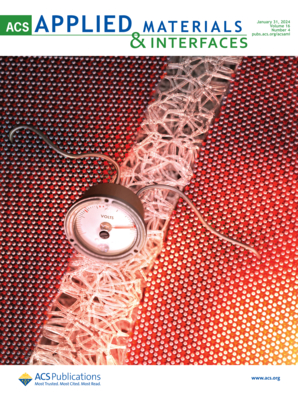Cell death‑related molecules and targets in the progression of urolithiasis (Review).
IF 8.3
2区 材料科学
Q1 MATERIALS SCIENCE, MULTIDISCIPLINARY
引用次数: 0
Abstract
Urolithiasis is a high‑incidence disease caused by calcium oxalate (mainly), uric acid, calcium phosphate, struvite, apatite, cystine and other stones. The development of kidney stones is closely related to renal tubule cell damage and crystal adhesion and aggregation. Cell death, comprising the core steps of cell damage, can be classified into various types (i.e., apoptosis, ferroptosis, necroptosis and pyroptosis). Different crystal types, concentrations, morphologies and sizes cause tubular cell damage via the regulation of different forms of cell death. Oxidative stress caused by high oxalate or crystal concentrations is considered to be a precursor to a variety of types of cell death. In addition, complex crosstalk exists among numerous signaling pathways and their key molecules in various types of cell death. Urolithiasis is considered a metabolic disorder, and tricarboxylic acid cycle‑related molecules, such as citrate and succinate, are closely related to cell death and the inhibition of stone development. However, a literature review of the associations between kidney stone development, metabolism and various types of cell death is currently lacking, at least to the best of our knowledge. Thus, the present review summarizes the major advances in the understanding of regulated cell death and urolithiasis progression.与细胞死亡相关的分子和靶点在尿路结石进展过程中的作用(综述)。
尿路结石是由草酸钙(主要)、尿酸、磷酸钙、硬石膏、磷灰石、胱氨酸等结石引起的一种高发疾病。肾结石的形成与肾小管细胞损伤、晶体粘附和聚集密切相关。细胞死亡是细胞损伤的核心步骤,可分为多种类型(即细胞凋亡、铁凋亡、坏死凋亡和热凋亡)。不同类型、浓度、形态和大小的晶体会通过调节不同形式的细胞死亡造成肾小管细胞损伤。高浓度草酸盐或晶体造成的氧化应激被认为是多种细胞死亡的前兆。此外,在各种类型的细胞死亡中,许多信号通路及其关键分子之间存在着复杂的串扰。尿路结石被认为是一种代谢性疾病,而柠檬酸和琥珀酸等三羧酸循环相关分子与细胞死亡和抑制结石形成密切相关。然而,至少就我们所知,目前还缺乏有关肾结石的形成、代谢和各种细胞死亡之间关系的文献综述。因此,本综述总结了在了解调节性细胞死亡和尿路结石进展方面的主要进展。
本文章由计算机程序翻译,如有差异,请以英文原文为准。
求助全文
约1分钟内获得全文
求助全文
来源期刊

ACS Applied Materials & Interfaces
工程技术-材料科学:综合
CiteScore
16.00
自引率
6.30%
发文量
4978
审稿时长
1.8 months
期刊介绍:
ACS Applied Materials & Interfaces is a leading interdisciplinary journal that brings together chemists, engineers, physicists, and biologists to explore the development and utilization of newly-discovered materials and interfacial processes for specific applications. Our journal has experienced remarkable growth since its establishment in 2009, both in terms of the number of articles published and the impact of the research showcased. We are proud to foster a truly global community, with the majority of published articles originating from outside the United States, reflecting the rapid growth of applied research worldwide.
 求助内容:
求助内容: 应助结果提醒方式:
应助结果提醒方式:


